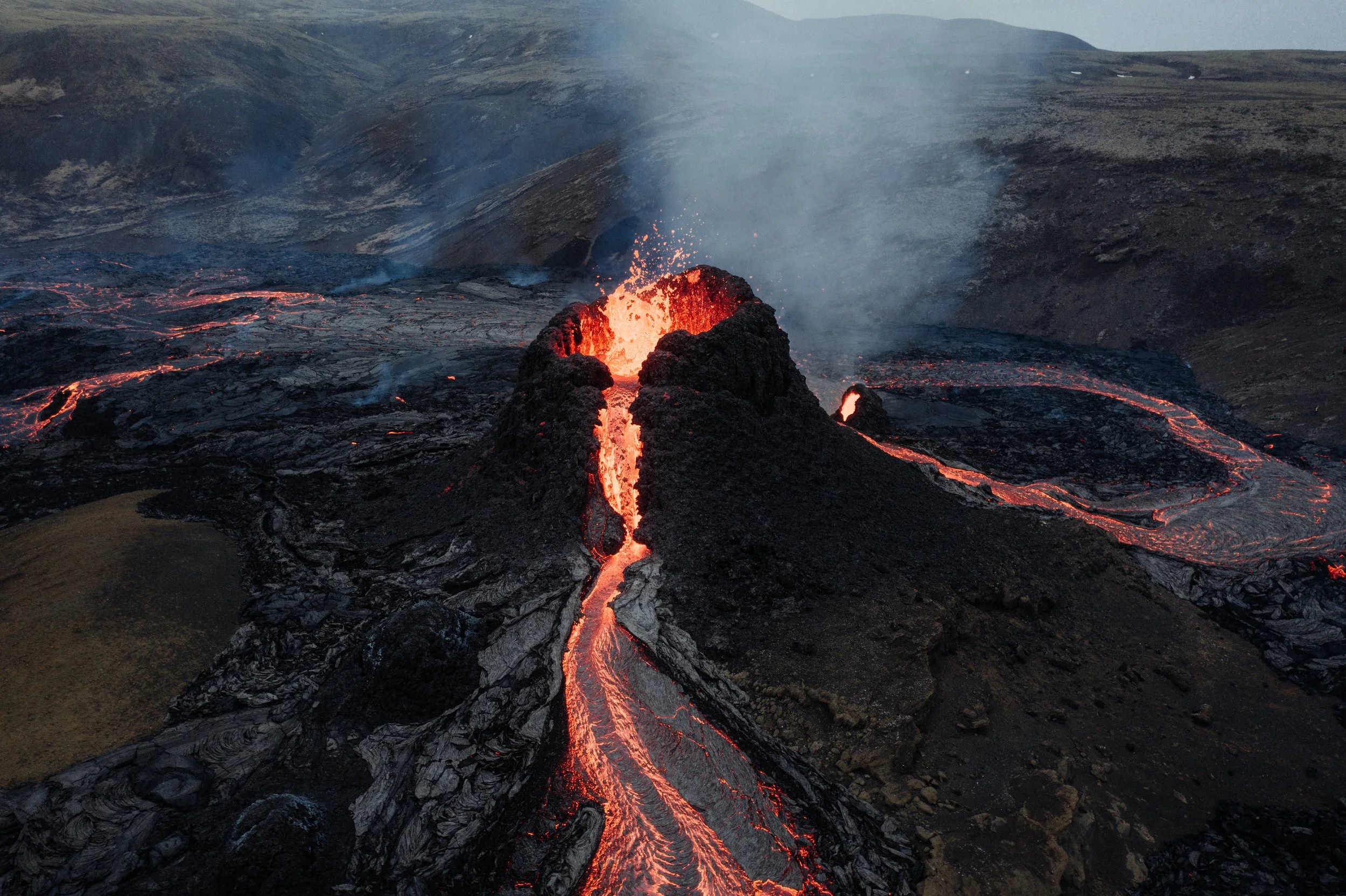5 Elements of Iceland - FIRE
Volcanic fire in its raw and elemental form holds unparalleled power to transform landscapes in dramatic and breathtaking ways. When molten lava emerges from the depths of the Earth; it leaves an indelible mark on Earth's surface. The intense heat reshapes the contours of land and can spew rock and ash miles away.
Iceland's volcanic activity is an opportunity to witness the raw, transformative power of change. Volcanic fire is a potent force of destruction and creation, where landscapes are shaped and reshaped into a rich tapestry of geological diversity.
Iceland's volcanic action is a spectacle of eruptions, and is a front-row seat to Earth's dynamic nature and the planet's continual transformation.
Living with this amount of geological activity instills a deep respect for Earth and stresses the importance of being prepared and adaptable in the face of inevitable change. It is a constant reminder of the need for coexistence with natural forces.
The people of Iceland who live with volcanic activity must develop extraordinary resilience and adaptability. Communities must create robust strategies to mitigate risks. We have seen this demonstrated over the years as Iceland has responded to potentially hazardous situations. Iceland’s volcanic fires fosters understanding and appreciation for forces that shape our world and is a testament to the dynamic nature of our planet.
Some of the many geological processes that are the result of Volcanic FIRE
Creation of New Landscapes: The flow of lava from volcanic eruptions creates new land as it solidifies upon contact with the Earth's surface. Over time, these cooled lava fields form diverse landscapes, ranging from rugged, rocky terrain to smooth, undulating surfaces.
Alteration of Terrain: The sheer force and heat of volcanic eruptions can alter the existing topography significantly. It can carve out deep valleys, form expansive plateaus, or create new mountains as layers of cooled lava build up.
Fertility and Soil Enrichment: Volcanic ash, rich in minerals and nutrients, can blanket surrounding areas after an eruption. Over time, this ash weathers down, enriching soil and fostering fertile grounds for vegetation to thrive. Some of the most fertile soils in the world, like those found near active volcanoes like Mount Etna in Italy or Mount Fuji in Japan, owe richness to volcanic activity.
Geological Diversity: Volcanic activity contributes to the creation of diverse geological formations. From lava tubes and caves formed by flowing lava to the creation of volcanic cones and calderas, the landscape showcases a tapestry of geological wonders shaped by volcanic fire.
Influence on Ecosystems: Despite the immediate devastation caused by volcanic eruptions, over time, these areas can become hubs of biodiversity. Unique ecosystems emerge, adapted to harsh, but nutrient-rich, environments created by volcanic activity.



